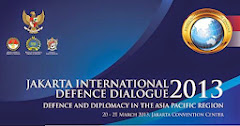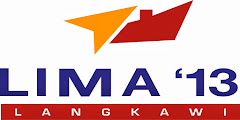28 Oktober 2013
HUMSA sonar developed by DRDO (photo : DRDO)
Signalling the Defence Research and Development Organisation’s (DRDO) strong intent to export military products to friendly nations, its chief and Scientific Adviser to the Defence Minister Avinash Chander said DRDO-made sonars would soon be exported to Myanmar in a groundbreaking initiative.
“We’ve attained total indigenisation in sonars and radars. Our ship-borne sonars are now being exported to Myanmar,” Mr. Chander told journalists after inaugurating an international symposium on ocean electronics organised by the Cochin University of Science and Technology (Cusat) here on Monday. The DRDO, in a major change in its outlook, was open to sale of its defence products to friendly nations, he said.
(The Hindu has learnt from its sources that Myanmar has inked a deal with Bharat Electronics earlier this year for procurement of three units of export variant of hull-mounted sonar developed by the DRDO’s Naval Physical and Oceanographic Laboratory located in Kochi.)
According to Mr. Chander, with the global market blobbing on its radar, the DRDO was taking part in the Aerospace and Defence Exhibition-2013 to be held in Seoul this month-end. “We’re taking an array of our systems, including Akash surface-to-air missile, Light Combat Aircraft Tejas and Pragati surface-to-surface missile to the exhibition,” he said.
On the air-independent propulsion (AIP) system being developed by the DRDO’s Naval Materials Research Laboratory at Ambernath, he said it would be integrated onto the last two Scorpene submarines being built at Mazagon Dock based on transfer-of-technology.
(AIP systems play a vital role in considerably enhancing the underwater endurance of conventional diesel-electric submarines. Conventional submarines devoid of AIP are required to surface once in a few days to recharge their batteries, a process when they are most vulnerable to attacks. Scorpenes being French-origin submarines, the French had offered to install their MESMA AIP on the Indian Scorpenes).
Mr. Chander said India needed some 80 to 100 satellites in the long-run to be able to ensure a fairly high degree of maritime domain awareness in the entire Indian Ocean region. There was need to launch low-cost, expendable satellites that could be swiftly deployed on demand, he said adding China already possessed such a capability, with some 19 satellites already keeping a watch over the Indian Ocean.
On Tejas, he said the aircraft in Mark-1 configuration would get full initial operational clearance by this year-end, and would brace for final operational clearance in 2014. Its series production had begun and induction of the first series production aircraft into the Air Force would also take place next year.
Main battle tank (MBT) Arjun in the enhanced Mark-2 configuration had some issues during the recent trials they would be resolved soon.
Mr. Chander was hopeful of seeing the induction of the 5,000 km-range Agni-V strategic missile in two years’ time. “But we need to hold three-four trials of the missile in user deployable configuration before that.”
The ambitious Advanced Medium Combat Aircraft (AMCA), he said, was on the drawing board and the basic configuration was being finalised at the moment.
“No country can progress by importing defence material and equipment” and therefore, the DRDO has identified several areas, where indigenisation could be done in a big way. “Ammunition for tanks and artillery guns for instance was one such area,” he said.
(The Hindu)
28 Oktober 2013
Langganan:
Posting Komentar (Atom)











Tidak ada komentar:
Posting Komentar